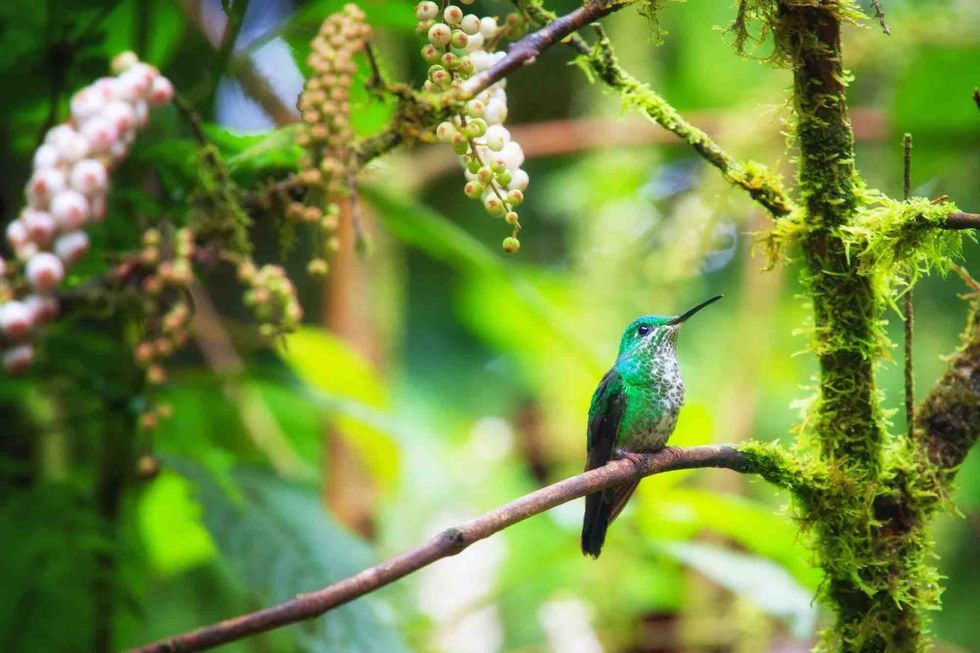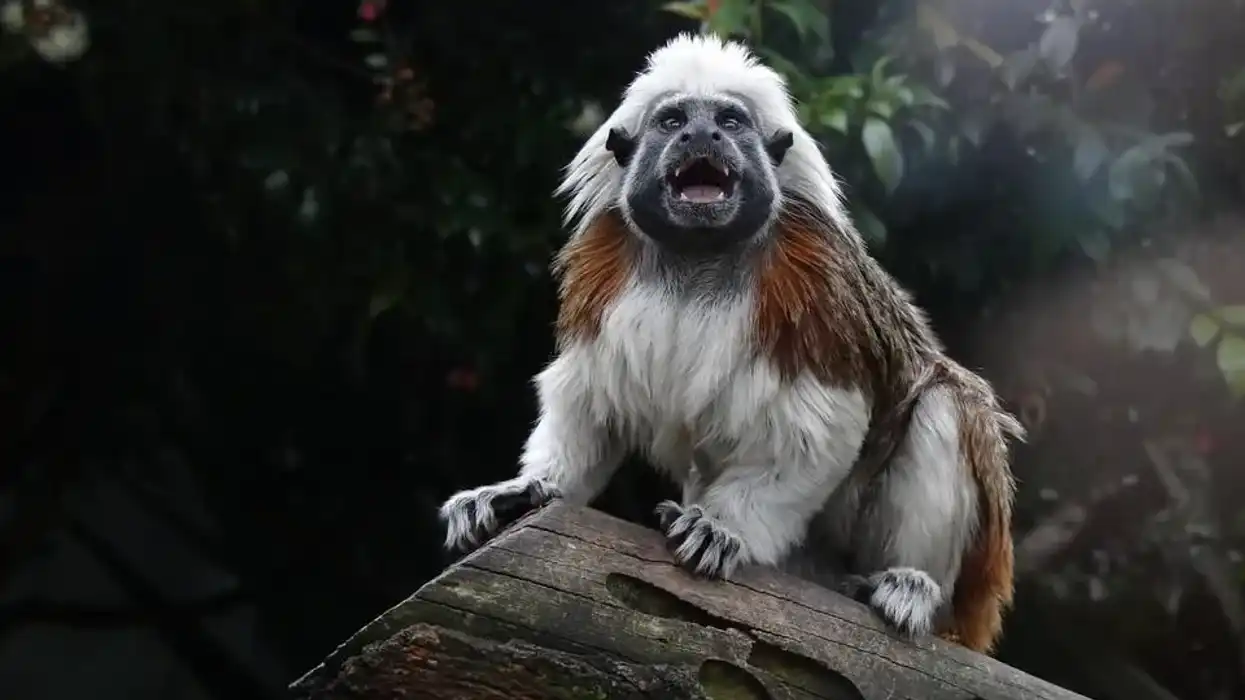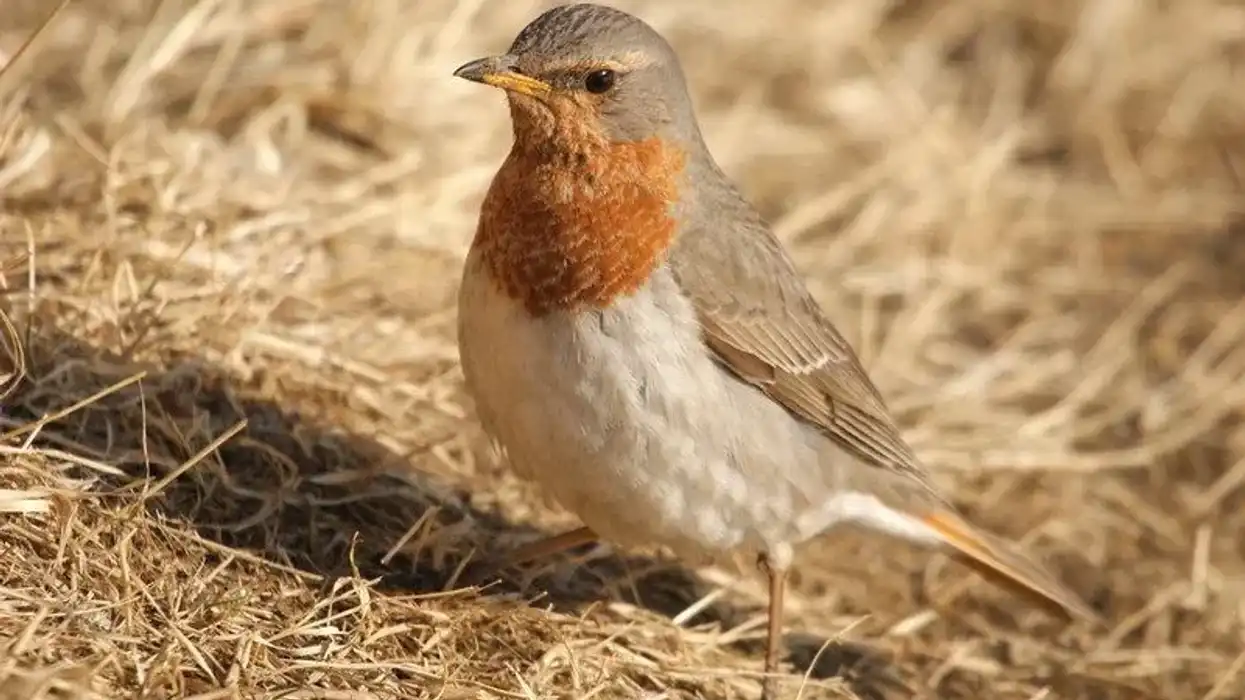The Mangrove Hummingbird (Amazilia boucardi) is a small bird endemic to the South American country Costa Rica. These birds belong to the Amazilia genus, which is found in the Central and South American sub-tropical regions and comes under the Trochilidae family.
These birds are currently classified as an Endangered species on the IUCN Red List as they have seen a huge decline in populations in their native Costa Rica due to human interference in their mangrove habitat regions.
Conservation efforts have been in place for years by the Costa Rican government for the protection of the birds and to bring them back from being almost critically endangered to a much stable number by educating natives on their importance and by putting several tight laws over the killing and capturing of these birds.
Hopefully, with these preventive measures, the Mangrove Hummingbird can be brought back to its original thriving populations.
If you liked these true facts about the Mangrove Hummingbird, then you'll surely like these facts about the bee hummingbird and hummingbird too!
Mangrove Hummingbird Interesting Facts
What type of animal is a Mangrove Hummingbird?
Mangrove Hummingbirds are a small species of birds that belong to the Amazilia genus, which consists mostly of hummingbirds and falls under the subfamily Trochilidae.
What class of animal does a Mangrove Hummingbird belong to?
The Mangrove Hummingbird (Amazilia boucardi) belongs to the Aves class of animals. The Aves class consists solely of birds and belongs to the family of Ardeidae.
How many Mangrove Hummingbirds are there in the world?
Mangrove Hummingbirds have seen a massive decline in their population in Costa Rica due to illegal road construction, selective logging for charcoal production, and building shrimp ponds causing destruction in their mangrove habitats, due to which their population has been declining steeply over the years. The population count of these hummingbird species is somewhere around 2,500-10,000 individuals.
Where does a Mangrove Hummingbird live?
The Mangrove Hummingbird is found in the subtropical or tropical mangrove forests on the Pacific coast of Costa Rica. The habitat range of the Mangrove Hummingbird spreads from the Nicoya Peninsula south to the Golfo Dulce. A small patch of these species can also be found in the Chiriquí region lying in the northwestern part of Panama.
What is a Mangrove Hummingbird's habitat?
The Mangrove Hummingbird species is exclusively found in mangroves, especially plantations with tea mangrove (Pelliciera rhizophorae). Mangrove Hummingbird is sometimes also found in second-growth habitats above high tide level.
Who does Mangrove Hummingbird live with?
Much like other species from the hummingbird family, the Mangrove Hummingbird, too, is a solitary bird. These birds forage alone on the nectar of flowers and only come together during the breeding season.
How long does a Mangrove Hummingbird live?
The Mangrove Hummingbird, like most other hummingbird species like the rufous hummingbird and the calliope hummingbird, has a lifespan of three to five years.
This short lifespan can either be extended or shrunk depending on either the surplus of food sources like flowers or the number of predator species found in the mangroves, or habitat loss caused by human interference.
How do they reproduce?
Not much is known about the age of sexual maturity in the male or female Mangrove Hummingbird. However, it is known that the breeding season of these birds usually takes place during October and February.
Both the male and the female will build the nest, which resembles a small cup with the external part made up of cobwebs, balso floss, and lichens. Nests are made in their native habitat range of mangroves on twigs of mangrove trees and are placed 3.3-13.1 ft (1-4 m) above the water.
After mating, the female will lay an average of two eggs which she will incubate.
What is their conservation status?
Currently, the Mangrove Hummingbird species is listed as an Endangered species of birds on the IUCN Red List.
The Mangrove Hummingbird has seen a steep decline due to human interference in their native mangrove habitats.
Illegal clearing of mangrove forests for different purposes like road construction and logging has caused these birds to move out of the mangroves and find pastures new where they have to compete with other birds for the nectar of flowers and other plants.
As a result of which, in most cases, it leads to them ending up losing to the other more habituated birds and ending up dying from starvation.
Mangrove Hummingbird Fun Facts
What does a Mangrove Hummingbird look like?
The Mangrove Hummingbird is a small-sized bird. The male Mangrove Hummingbird is often seen with a throat and chest that has a bluish-green tint to it with a forked tail and white belly.
They have a green crown and upperparts with a slight bronze tinge that is visible on the tail and the rump. The female, on the other hand, is similar to the male, except it has white underparts, and the throat and sides have small green spots.
Males have a slightly decurved bill with a blackish upper and reddish lower mandible. A bronze-green color variation can be seen on the upper parts of the body with golden flanks.
The plumage on the tail is a bronze-green tinge and is slightly forked. The female plumage is green with white under-eyes, cheeks, and lore.
The bill and the tail are slightly larger than the male. The plumage of the juvenile is just like that of the female in throat coloration, and they lack the dominant bronze tinge, pale green crown, and white underbelly and instead have a more greyish tone to them.

How cute are they?
The Mangrove Hummingbird is an amazingly beautiful bird because of how colorful it is! These birds from Costa Rica attract lots of birdwatchers as they are a delight to the eyes, much like other hummingbird species like Anna's hummingbird.
How do they communicate?
The Mangrove Hummingbird, like most humming species, communicates with each other through vocalizations and vibration. These birds have a rapid, high-pitched call.
How big is a Mangrove Hummingbird?
The Mangrove Hummingbird is a small-sized bird, and an adult will grow between 3.7-4.3 in (9.5-11 cm). Females are also 15-20% larger than males since they are egg-laying.
In comparison, the largest hummingbird species, the Giant hummingbird, can grow up to 8.6 in (21.8 cm) in total body length. In contrast, the ani bird is four times the size of the Mangrove Hummingbird.
How fast can a Mangrove Hummingbird fly?
The exact speed at which the Mangrove Hummingbird flies cannot be stated due to a lack of data.
How much does a Mangrove Hummingbird weigh?
An adult Mangrove Hummingbird weighs a mere 0.6 oz (4.5 g) fully grown.
What are the male and female names of the species?
No particular name has been assigned to either sex of species of this bird.
What would you call a baby Mangrove Hummingbird?
A baby Mangrove Hummingbird is called a chick.
What do they eat?
The diet of the Mangrove Hummingbird consists mostly of nectar from flowers. These birds sometimes also feed on insects and small spiders that are found on the flowers. Parents usually feed their offspring lots of insects in order to make up the nutritious part of their diets.
Are they dangerous?
No, the Mangrove Hummingbird is docile and is hardly a threat because of its small size. Instead, they play a major role in the ecosystem of the mangroves of Costa Rica as they help in the pollination of plants and flowers.
Would they make a good pet?
No! These birds are a protected species by international laws, which forbid people from catching them and using them in the pet trade. In case you are caught with one, you will have to pay a fine and, in some cases, even serve jail time according to the international pet trade law.
Did you know...
In general, the hummingbird species flap their wings at a rapid rate which can help attain their speed of 20-30 mph (32.2- 48.2 kph)! During the breeding season, they can triple this rapid wing beat to display courtship rituals!
The Mangrove Hummingbird belongs to the smallest migrating bird family as they do not migrate in flocks and can travel up to 500 miles (804.6 km) alone at times.
The Mangrove Hummingbird, just like other hummingbirds, is capable of flying backward!
The legs of these birds are only of use when they are perching as they cannot hop or walk.
Mangrove Hummingbirds can drink twice their body weight in a day from flowers as they push their tongue in and out about 13 times per second.
How to tell female and male Mangrove Hummingbirds apart?
Due to the small size of the Mangrove Hummingbird, it can be tough to differentiate between the male and female.
However, the color of the plumage is a great way to differentiate between them as males have a dull green upper body and crown, and females have patches of pale green spots on their neck and side of the body.
The shape of the bill is another feature that can be used to differentiate them as the male has a slightly decurved bill compared to the female.
Does Mangrove Hummingbird migrate?
No, these birds mostly stick to their Pacific coast habitat of Costa Rica and do not migrate.
Here at Kidadl, we have carefully created lots of interesting family-friendly animal facts for everyone to discover! Learn more about some other birds from our adélie penguin facts and common buzzard facts pages.
You can even occupy yourself at home by coloring in one of our free printable Mangrove hummingbird coloring pages.









